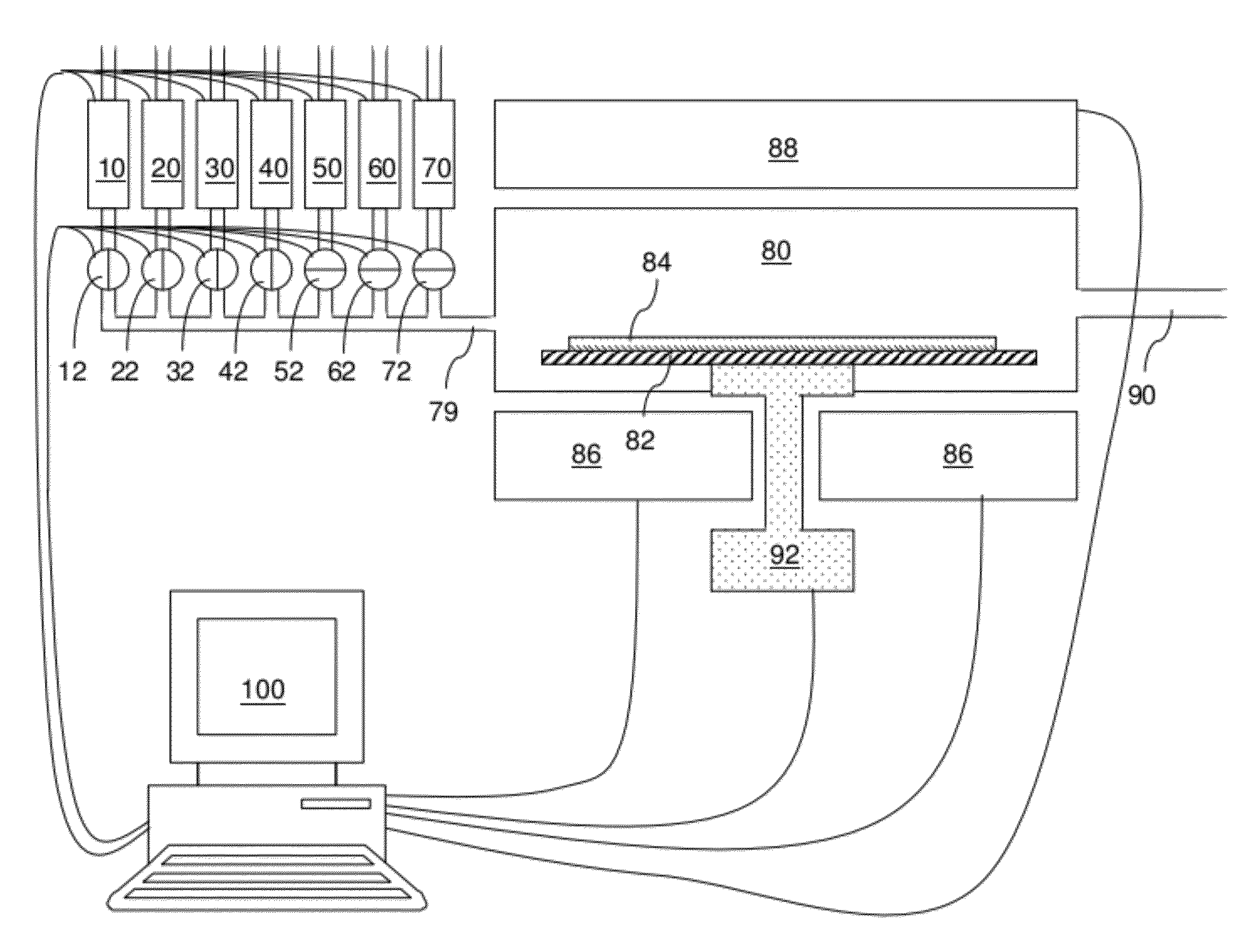Low temperature selective epitaxy of silicon germanium alloys employing cyclic deposit and etch
a selective epitaxy and low temperature technology, applied in the direction of polycrystalline material growth, crystal growth process, chemically reactive gas, etc., can solve the problems of unattainable epitaxial growth selectivity, misfit dislocation and stacking fault, and the epitaxial film of silicon germanium alloy formed by such selective deposition methods is not fully strained for germanium concentrations greater than 45 atomic percent, etc., to achieve enhanced etch rate and high deposition rate of silicon germanium alloy material
- Summary
- Abstract
- Description
- Claims
- Application Information
AI Technical Summary
Benefits of technology
Problems solved by technology
Method used
Image
Examples
examples
Results
[0070]The meta-stable critical thickness of silicon germanium alloys is a strong function of growth temperature as illustrated in FIG. 3. To incorporate fully-strained germanium at a concentration of 45 atomic percent or greater in a 60 nm thick epitaxial silicon germanium alloy film grown on a silicon surface, deposition temperature of the silicon germanium alloy film should not exceed 500° C.
[0071]Different flow rates for tetrasilane (Si4H10) were employed in combination with 280 standard cubic centimeter per minute (sccm) of GeH4 flow at 500° C. at the deposition temperature. The germanium concentrations and growth rates corresponding to selected values of flow rates for tetrasilane (Si4H10) are shown in FIG. 4. Increasing the flow rate for tetrasilane (Si4H10) resulted in higher growth rates and lower germanium concentration in the silicon germanium alloy films. Higher germanium concentrations can be achieved by reducing the flow rate of tetrasilane (Si4H10) below 20 mg / ...
PUM
| Property | Measurement | Unit |
|---|---|---|
| deposition temperature | aaaaa | aaaaa |
| deposition temperature | aaaaa | aaaaa |
| temperature | aaaaa | aaaaa |
Abstract
Description
Claims
Application Information
 Login to View More
Login to View More - R&D
- Intellectual Property
- Life Sciences
- Materials
- Tech Scout
- Unparalleled Data Quality
- Higher Quality Content
- 60% Fewer Hallucinations
Browse by: Latest US Patents, China's latest patents, Technical Efficacy Thesaurus, Application Domain, Technology Topic, Popular Technical Reports.
© 2025 PatSnap. All rights reserved.Legal|Privacy policy|Modern Slavery Act Transparency Statement|Sitemap|About US| Contact US: help@patsnap.com



